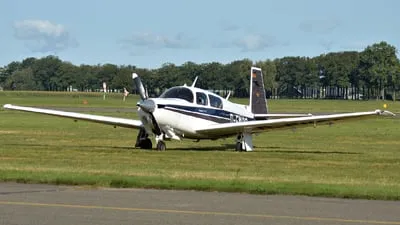Understanding Best Glide Speed and Glide Ratio in Mooney Aircraft
As a flight instructor who’s specialized in complex aircraft for over a decade, I find that best glide speed remains one of the most misunderstood yet critical performance parameters. The MooneySpace discussion on this topic highlights the confusion that exists even among experienced pilots. In my years of teaching emergency procedures, I’ve observed that pilots too often memorize a single number without understanding the variables that affect real-world glide performance. Wind, aircraft weight, propeller configuration, and even avionics can significantly alter your actual glide distance. What’s particularly valuable about the forum’s analysis is how it distinguishes between theoretical best L/D ratio and practical best glide speed for emergency situations. When facing an actual power loss, these nuances become far more than academic—they directly impact your survival odds. I always teach my students that best glide speed isn’t just a number to memorize but a range to understand contextually, and this thread brilliantly illustrates why.

A MooneySpace forum member initiated a discussion about discrepancies in published best glide speed (Vg) and glide ratio values across various documentation for Mooney aircraft. The original poster noted variations between the POH, third-party checklists, and ForeFlight performance profiles, seeking clarification on which numbers to trust. Multiple pilots with engineering backgrounds provided technical explanations of how best L/D (lift-to-drag) ratio differs from operational best glide speed. An experienced CFI pointed out that the POH value of 85 KIAS (for M20J models) represents a compromise between theoretical efficiency and practical emergency management. Several contributors emphasized that published glide ratios (typically 9:1 to 10.5:1) represent ideal conditions, with actual performance being significantly degraded by factors including windmilling propellers (reducing glide ratio by up to 30%), non-optimal speed control, and headwinds. A heated debate emerged over whether to use higher speeds for headwind conditions, with several pilots sharing that simulator testing had convinced them that maintaining POH glide speed regardless of wind produced the best results. A Mooney test pilot contributed that manufacturer data is typically generated with the propeller in feathered position and at max gross weight, representing a different scenario than most emergency situations. Multiple contributors agreed that regular practice of power-off glides to landing is the best way to develop realistic expectations of aircraft performance. The discussion concluded with practical advice to have ForeFlight or similar tools ready to identify suitable landing sites within the aircraft’s glide cone, rather than focusing exclusively on theoretical range numbers. Check out the full discussion over on MooneySpace for more detailed insights from experienced Mooney pilots and instructors.